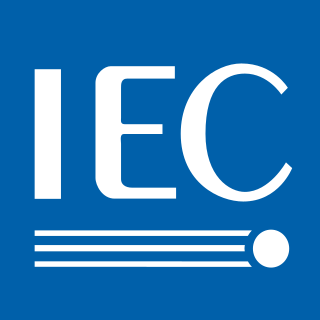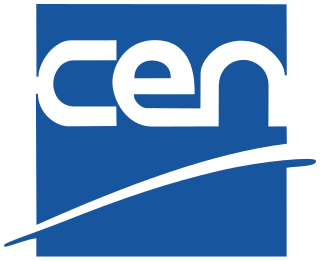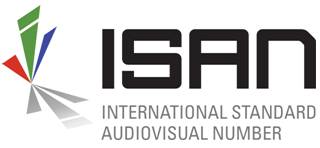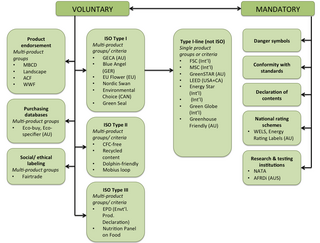
The International Organization for Standardization is an independent, non-governmental, international standard development organization composed of representatives from the national standards organizations of member countries. Membership requirements are given in Article 3 of the ISO Statutes.

The International Electrotechnical Commission is an international standards organization that prepares and publishes international standards for all electrical, electronic and related technologies – collectively known as "electrotechnology". IEC standards cover a vast range of technologies from power generation, transmission and distribution to home appliances and office equipment, semiconductors, fibre optics, batteries, solar energy, nanotechnology and marine energy as well as many others. The IEC also manages four global conformity assessment systems that certify whether equipment, system or components conform to its international standards.

The European Committee for Standardization is a public standards organization whose mission is to foster the economy of the European Single Market and the wider European continent in global trading, the welfare of European citizens and the environment by providing an efficient infrastructure to interested parties for the development, maintenance and distribution of coherent sets of standards and specifications.
Registration authorities exist for many standards organizations, such as ANNA, the Object Management Group, W3C, and others. In general, registration authorities all perform a similar function, in promoting the use of a particular standard through facilitating its use. This may be by applying the standard, where appropriate, or by verifying that a particular application satisfies the standard's tenants. Maintenance agencies, in contrast, may change an element in a standard based on set rules – such as the creation or change of a currency code when a currency is created or revalued. The Object Management Group has an additional concept of certified provider, which is deemed an entity permitted to perform some functions on behalf of the registration authority, under specific processes and procedures documented within the standard for such a role.

International Standard Audiovisual Number (ISAN) is a unique identifier for audiovisual works and related versions, similar to ISBN for books. It was developed within an ISO TC46/SC9 working group. ISAN is managed and run by ISAN-IA.

The water industry provides drinking water and wastewater services to residential, commercial, and industrial sectors of the economy. Typically public utilities operate water supply networks. The water industry does not include manufacturers and suppliers of bottled water, which is part of the beverage production and belongs to the food sector.

Ecolabels and Green Stickers are labeling systems for food and consumer products. The use of ecolabels is voluntary, whereas green stickers are mandated by law; for example, in North America major appliances and automobiles use Energy Star. They are a form of sustainability measurement directed at consumers, intended to make it easy to take environmental concerns into account when shopping. Some labels quantify pollution or energy consumption by way of index scores or units of measurement, while others assert compliance with a set of practices or minimum requirements for sustainability or reduction of harm to the environment. Many ecolabels are focused on minimising the negative ecological impacts of primary production or resource extraction in a given sector or commodity through a set of good practices that are captured in a sustainability standard. Through a verification process, usually referred to as "certification", a farm, forest, fishery, or mine can show that it complies with a standard and earn the right to sell its products as certified through the supply chain, often resulting in a consumer-facing ecolabel.

The Programme for the Endorsement of Forest Certification (PEFC) is an international, non-profit, non-governmental organization which promotes sustainable forest management through independent third-party certification. As of 2006, it was considered the certification system of choice for small forest owners in Europe.

The Asia-Pacific Broadcasting Union, formed in 1964, is a non-profit, professional association of broadcasting organisations. It currently has over 287 members in 57 countries and regions, reaching a potential audience of about 3 billion people. The ABU's role is to help the development of broadcasting in the Asia-Pacific region and to promote the collective interests of its members. The ABU covers an area stretching from Turkey in the west to Samoa in the east, and from Mongolia in the north to New Zealand in the south. Its secretariat is located in Angkasapuri, Kuala Lumpur, Malaysia, its secretary-general, currently Dr Javad Mottaghi.
The International Confederation of Societies of Authors and Composers is an international non-governmental, not-for-profit organisation that aims to protect the rights and promote the interests of creators worldwide. It advocates for strong legal protection of copyright and authors' rights. It is the world's largest international network of authors' societies, also known as Collective Management Organisations (CMOs), copyright / royalty collection societies, collecting societies, or Performing Rights Organisations (PROs).
DAVIC, Digital Audio Video Council, was founded in 1994 with the aim of promoting the success of interactive digital audio-visual applications and services by promulgating specifications of open interfaces and protocols that maximise interoperability, not only across geographical boundaries but also across diverse applications, services and industries. It was a non-profit international organization based in Switzerland.
In Romania, copyright law is defined by the Law No. 8/1996 on authors rights and related rights, as republished in 2018, which currently implements European copyright law (directives). Copyright is acquired irrespective of formalities, and normally belongs to the natural person/s who created the protected work. A protected work is created if the work is the author's own intellectual creation. Like other EU civil law jurisdictions, Romanian copyright law recognises two types of rights: moral rights and patrimonial rights.

Directive 92/100/EEC is a European Union directive in the field of copyright law, made under the internal market provisions of the Treaty of Rome. It creates a "rental and lending right" as a part of copyright protection, and sets out minimum standards of protection for the related rights of performers, phonogram and film producers and broadcasting organizations.

The Satellite and Cable Directive, formally the Council Directive 93/83/EEC of 27 September 1993 on the coordination of certain rules concerning copyright and rights related to copyright applicable to satellite broadcasting and cable retransmission, is a European Union directive that governs the application of copyright and related rights to satellite and cable television in the European Union. It was made under the internal market provisions of the Treaty of Rome.
Extended collective licensing (ECL) are collective copyright and related rights laws and licensing agreements. ECL agreements by law apply to all rights holders in a class, whether they are members of the collecting society or not, and establish terms of licenses with users or classes of users. The first ECL laws and agreements were established in the Nordic countries in the 1960s for television and radio broadcasting.
The Entertainment Identifier Registry, or EIDR, is a global unique identifier system for a broad array of audiovisual objects, including motion pictures, television, and radio programs. The identification system resolves an identifier to a metadata record that is associated with top-level titles, edits, DVDs, encodings, clips, and mashups. EIDR also provides identifiers for video service providers, such as broadcast and cable networks.
Collection administration of copyrights describes the use in Canadian law of collective societies to manage licenses for copyrighted material belonging to more than one copyright owner. These collective societies are responsible for granting permission to use the works they manage and setting out what conditions users of their works must follow. Examples of collective societies in Canada include: Christian Video Licensing International and the Canadian Broadcasters Rights Agency
ISO/IEC JTC 1/SC 29, entitled Coding of audio, picture, multimedia and hypermedia information, is a standardization subcommittee of the Joint Technical Committee ISO/IEC JTC 1 of the International Organization for Standardization (ISO) and the International Electrotechnical Commission (IEC). It develops and facilitates international standards, technical reports, and technical specifications within the field of audio, picture, multimedia, and hypermedia information coding. SC 29 includes the well-known JPEG and MPEG experts groups, and the standards developed by SC 29 have been recognized by nine Emmy Awards.
ISO/IEC JTC 1/SC 6 Telecommunications and information exchange between systems is a standardization subcommittee of the Joint Technical Committee ISO/IEC JTC 1. It is part of the International Organization for Standardization (ISO) and the International Electrotechnical Commission (IEC), which develops and facilitates standards within the field of telecommunications and information exchange between systems.








